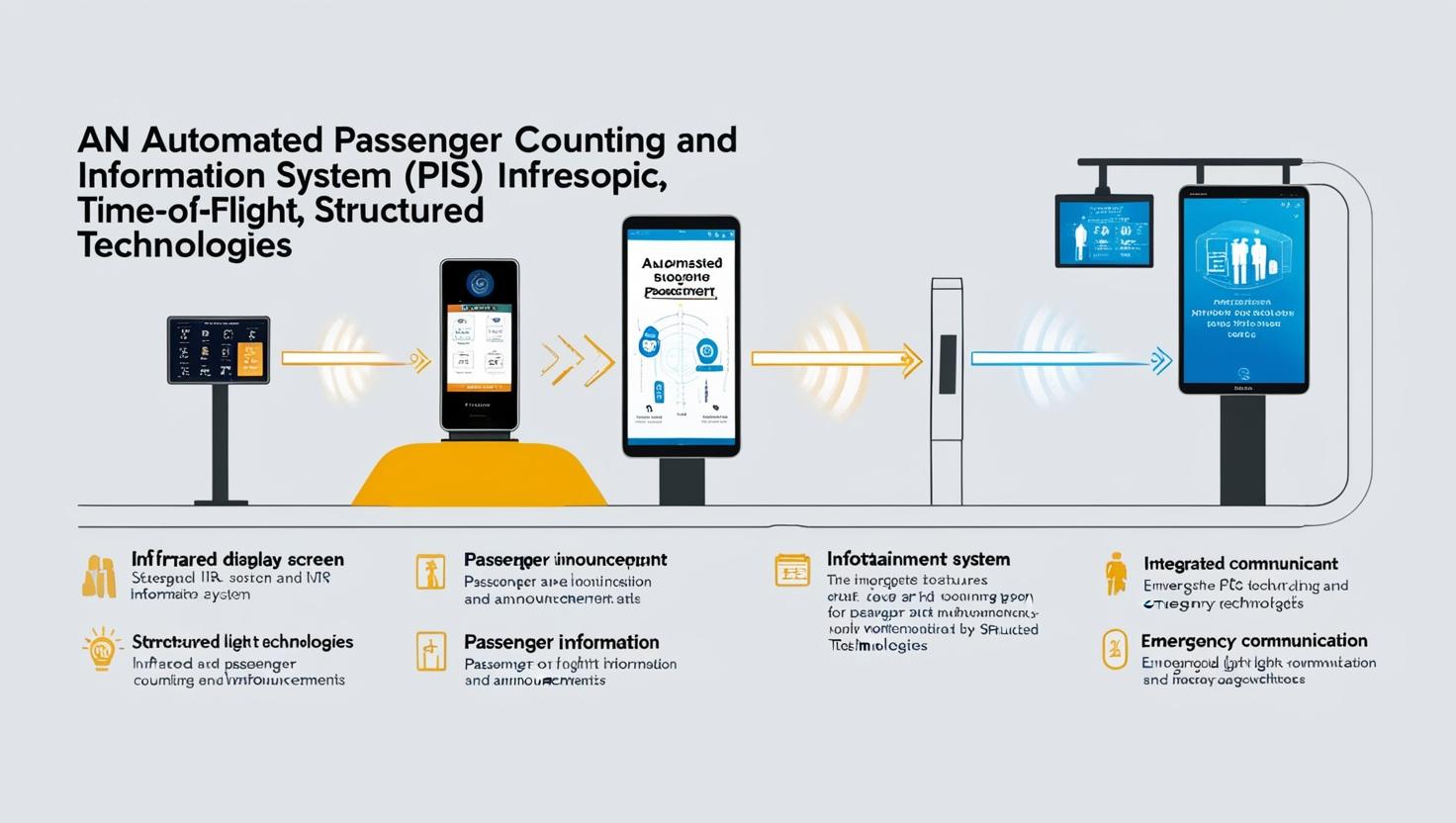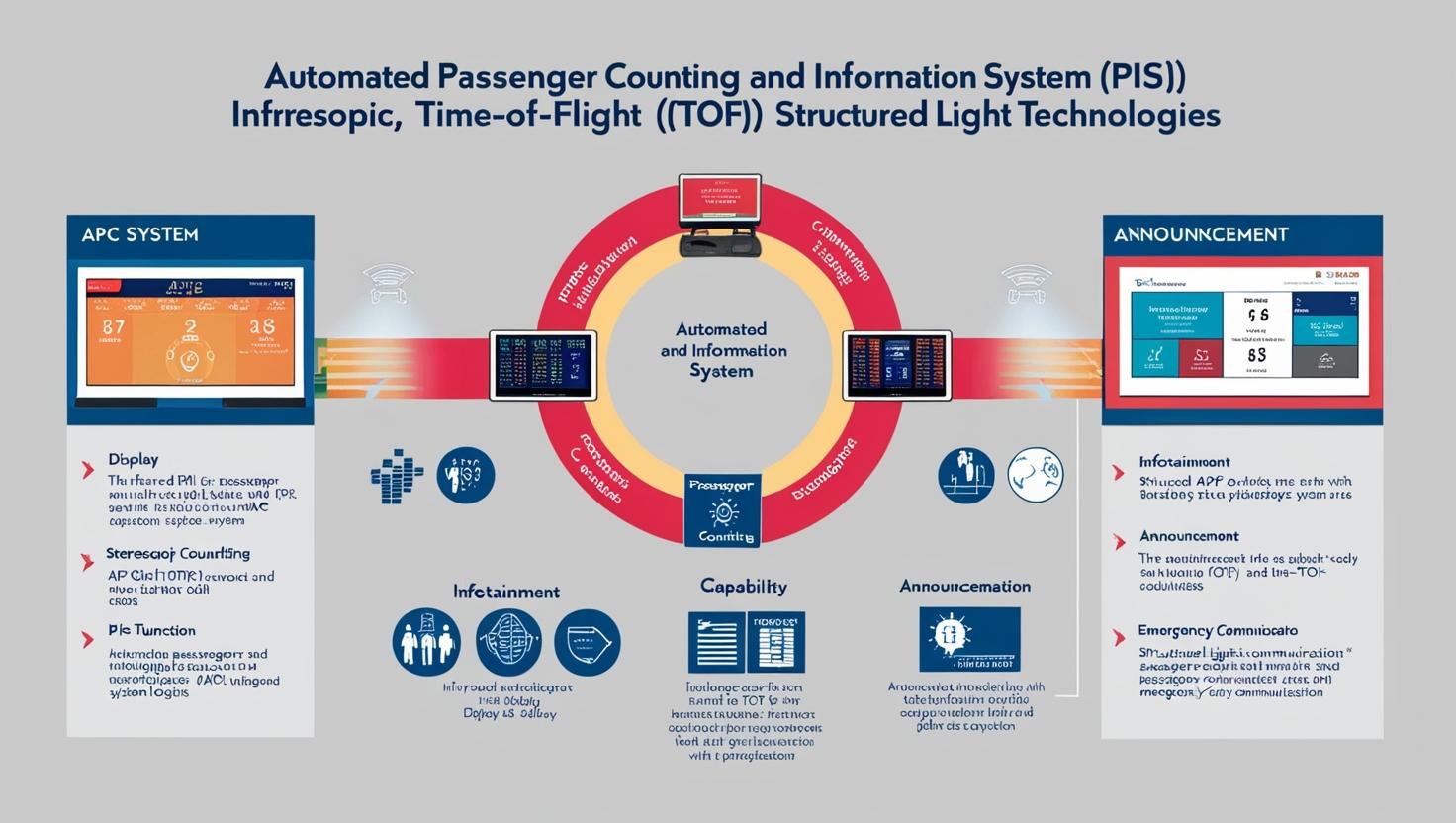The transportation industry has seen transformative changes over the past few decades, and with the growing need for smarter, more efficient systems, the future is leaning heavily toward automation. Among the most significant innovations shaping this future are Automated Passenger Counting (APC) systems and Automated Information Systems (AIS). These technologies are transforming how public transit systems operate, improving both operational efficiency and passenger experience. As cities and transit authorities strive to meet the demands of an ever-growing urban population, advancements in APC and AIS are paving the way for a smarter, more sustainable future in transportation.
What Are Automated Passenger Counting (APC) and Information Systems (AIS)?
Automated Passenger Counting systems use sensors and advanced algorithms to track the number of passengers boarding and disembarking from public transportation vehicles in real time. These systems can utilize a variety of technologies such as infrared sensors, radar, video surveillance, and pressure mats to count passengers with high accuracy. APC systems collect valuable data that can be used to optimize routes, adjust schedules, and plan for future capacity needs, all while enhancing safety.
On the other hand, Automated Information Systems (AIS) are used to provide real-time updates to passengers and transit operators alike. These systems can include electronic display boards, mobile apps, and onboard monitors, which provide passengers with crucial information such as bus arrival times, route updates, and other operational notices. By using data from APC systems, AIS can make these updates more accurate and personalized, ensuring a smoother experience for riders.
The global automated passenger counting and information system industry is expected to be valued at USD 9.2 billion in 2024 and is projected to reach USD 15.4 billion by 2029; it is expected to grow at a CAGR of 10.7 % from 2024 to 2029

The Role of APC and AIS in Modernizing Public Transport
The integration of Automated Passenger Counting and Information Systems is a cornerstone of modern public transit management. By collecting real-time data on passenger flows, operators can make more informed decisions. Here are some of the key ways these systems are revolutionizing transportation:
1. Improved Operational Efficiency
Public transport systems are often challenged by fluctuating passenger demand. APC systems provide accurate data on how many passengers are using particular routes at different times of day. This data helps operators optimize scheduling, minimize overcrowding, and ensure vehicles are dispatched as needed. By identifying peak travel times, transit authorities can allocate resources more effectively, reducing delays and improving overall efficiency.
With APC systems, transit authorities can also identify underused routes, allowing for better allocation of resources, and adjusting services based on actual demand rather than guesswork or outdated data. Additionally, with real-time data on passenger loads, operators can dynamically reroute vehicles or redistribute resources in real time to address sudden surges in demand.
2. Enhanced Passenger Experience
Automated Information Systems (AIS) play a crucial role in enhancing the passenger experience. Real-time updates on bus, train, or tram arrival times, delays, and route information give passengers peace of mind, knowing when their transportation will arrive and whether they need to make adjustments to their journey. By providing up-to-date information via mobile apps, websites, and onboard displays, AIS helps passengers plan their trips more effectively.
Moreover, as transportation authorities continue to embrace smart city technologies, integrating APC and AIS into citywide systems can lead to a more seamless experience. For example, passengers can be notified if their usual bus is delayed or if there’s an alternative route they can take, all in real time. This reduces wait times, frustration, and improves overall satisfaction.
Download PDF Brochure @
https://www.marketsandmarkets.com/pdfdownloadNew.asp?id=17856390
3. Data-Driven Decision Making and Planning
Data collection through APC systems provides transit authorities with valuable insights into passenger behavior. This data can be used to predict trends and make informed decisions about service planning. For example, transit planners can track shifts in ridership patterns, identify areas with high demand, and prioritize the development of new routes or services accordingly.
Additionally, historical data on passenger loads can be used to improve future infrastructure investments. By understanding peak travel times, operators can plan for expansions, redesign routes, or deploy more efficient buses or trains to accommodate growing demand. With ongoing analytics, transportation authorities can make smarter, more proactive decisions that better meet the needs of passengers.
4. Sustainability and Environmental Benefits
Sustainability is a growing concern in the transportation sector, especially with global efforts to reduce carbon emissions. By optimizing routes and schedules through data from APC systems, public transit can operate more efficiently, reducing fuel consumption and emissions. Additionally, by identifying underused routes or buses, cities can reduce the number of vehicles on the road, further reducing environmental impact.
Moreover, real-time data provided by AIS can encourage greater use of public transportation by making it more predictable and reliable. This can result in fewer private car trips, leading to reduced traffic congestion and pollution. In the long run, smarter, more efficient public transport systems contribute to the overall sustainability of urban environments.
5. Safety and Security
In terms of safety and security, APC systems contribute by monitoring passenger loads to ensure that vehicles are not overloaded, preventing potential safety hazards. They also improve the ability of transit authorities to respond to incidents or emergencies. For example, if a vehicle is reported as overcrowded, transit authorities can dispatch additional buses or trains in real time to alleviate the situation.
AIS also improves safety by providing passengers with real-time alerts about emergency situations, such as delays or detours, helping to manage expectations and reduce panic. These systems are especially critical in large, dense urban areas where real-time communication can be essential for effective crowd management during crises or unplanned events.

The Future of APC and AIS in the Transportation Industry
The future of Automated Passenger Counting and Information Systems is bright, with technology continuing to evolve and integrate more advanced capabilities. Some of the key developments on the horizon include:
-
Integration with IoT (Internet of Things): By connecting APC and AIS to IoT devices, real-time data can be used to provide even more granular insights into traffic, passenger behavior, and vehicle conditions. This will help transport operators make smarter decisions and further improve service quality.
-
AI and Machine Learning: AI will continue to improve the predictive capabilities of APC and AIS. Machine learning algorithms will analyze passenger data to predict ridership trends, optimize schedules, and even assist with crowd management in real time.
-
Smart Ticketing Systems: Integration with smart ticketing technologies will make payment and boarding faster and more seamless, enhancing the overall convenience of using public transport systems.
-
Enhanced Personalization: With advancements in AI and data analytics, public transportation will become increasingly personalized. Passengers will receive tailored route suggestions and travel updates based on their preferences and real-time conditions.
Automated Passenger Counting and Information Systems are already transforming public transportation by improving operational efficiency, enhancing the passenger experience, and providing real-time data that drives smarter decision-making. As we look ahead, these systems will become even more advanced, playing a crucial role in the evolution of smarter, more sustainable, and efficient urban mobility solutions. For cities aiming to stay competitive and meet the demands of a rapidly urbanizing population, adopting these technologies will be key to staying ahead of the curve. The future of transportation is here, and it’s powered by automation.
